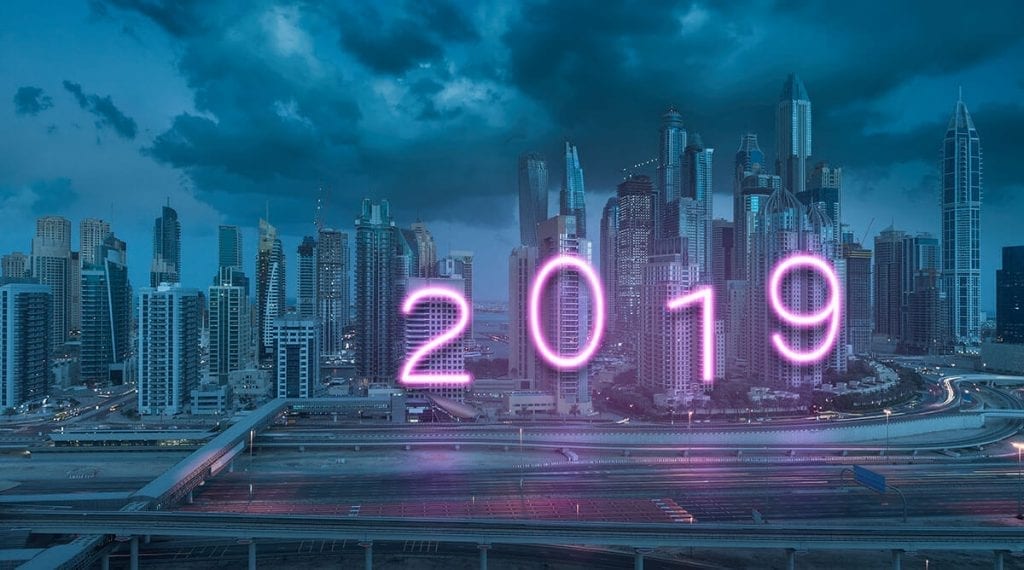The cyber security world saw an increased number of breaches of major corporate systems in 2018, with many well-known organisations such as Amazon, Facebook, Adidas and Delta Airlines suffering significant breaches.
In 2019, breaches will inevitably still be a part of the threat landscape, with cyber attackers becoming increasingly sophisticated and adding new methods to their arsenals in order to bypass improved security measures and breach even the most robust systems.
Corporate leaders will now also have to shoulder the responsibility for security failures, as customers, partners and shareholders seek to hold CEOs, rather than just the CIOs and CISOs, ultimately responsible. As such, cyber security will be a major topic in boardrooms across the globe this year, with organisations striving to strengthen their security procedures and mitigate cyber risks.
However, the cyber security scene will also see innovative developments such as AI and machine learning, advanced cloud solutions and live hacking – which will enable organisations to improve their security.
AI (Artificial Intelligence)/Machine Learning
In recent years, the commercial promise of AI has begun to materialise, with AI cyber security solutions in the form of machine learning tools already in use across many organisations and security applications. These tools monitor activity and analyse data much quicker than traditional tools, ‘learning’ what is and isn’t normal, and taking remedial action based on predetermined rulesets when unusual behaviours are detected – enabling breach detection times to be significantly reduced. Although they do not currently have the capability of rewriting code to protect systems, and as such are not considered true AI solutions, 2019 will see machine learning tools move a step closer to this scenario – with security trends indicating AI will be poised to help forecast, classify and potentially block cyber threats and attacks.
However, AI systems will also emerge as promising attack targets due to the massive amounts of data they hold – and their fragility will become a growing concern. These systems are particularly susceptible to malicious input which can corrupt their logic and affect their operations; enabling hackers to create a new breed of AI-powered malware which infects an organisation’s system, sits undetected gathering information and then adapts to its surroundings to unleash a series of bespoke attacks. As a result, 2019 will likely see the first AI-orchestrated attack on a FTSE100 company.
Burning Tree has teamed up with CyGlass – a network-centric, dark threat detection solution that allows you to uncover, pinpoint and respond to advanced cyber threats that have evaded conventional state of the art security controls.
CyGlass intuitively identifies, understands and classifies which assets are most important on your network. By understanding the value of your assets, its deep machine learning and machine reasoning techniques offer superior precision when it comes to pinpointing the most critical threats to your business.
CyGlass are offering significant early adopter pricing discounts for companies able to purchase licences before 30 June 2019. This represents the lowest cost in the dark threat detection software market versus all known competitors in this important sector. Burning Tree recommends company’s take a serious look at CyGlass when considering network-centric dark threat detection solutions.
Cloud Migration
As more businesses move towards remote ways of working, 2019 will see a greater shift towards the cloud – in an effort to cut costs, reduce downtime, increase speed and improve scalability. Cloud deployments also enable flexible working for staff, centralised data collection and locally distributed teams.
Nonetheless, security is a major challenge when it comes to migrating, as hackers continue to find new ways to breach the systems. Many companies also mistakenly assume they’re automatically protected whilst transitioning workloads to the cloud. This year the cyber security world will, therefore, experience an increased demand for cloud migration security, with organisations seeking the help of specialists to reinforce their defences against attacks.
Supply Chain Attacks
Supply chains will become increasingly common targets this year, as businesses look to grow their reliance on partnerships. Cyber attackers are constantly searching for new and sophisticated ways to infiltrate high-profile companies and it is often an organisation’s network of suppliers and contractors which exposes them to the greatest security risks. For example, an attacker may implant malware into otherwise legitimate software packages during production at a third-party supplier – thus enabling the malicious version to be distributed quickly and surreptitiously to intended targets.
These types of threats are particularly difficult to remove and are likely to persist even after the impacted computer is rebooted. As a result, 2019 will be the time for organisations that rely on third parties or partners to examine their vendor risk management processes – in order to safeguard company assets.
Live Hacking
As the landscape continues to evolve at pace and with the latest developments providing new opportunities for attacks, live hacking will prove to be a powerful tool against cyber threats in the year ahead. By connecting professional hackers with security teams, live hacking goes beyond regular training on basic protocols such as password security – training employees to think like hackers in order to defend themselves against them.
These crowdsourced security tactics will enable organisations to identify vulnerabilities and reduce the risk of security breaches in the future, as well as improving and scaling their application security teams.
Would you like to find out more about CyGlass and how we can help identify innovative solutions to improve your organisations’ cyber security this year? Fill in the form below and our Global Head of Sales & Business Development, Les Parsonson will be in touch:




